Computer Knowledge section can help you to improve your overall score if in case other sections are tougher than the expectation. We are providing you with a question set based on the types and patterns of questions asked in the Computer Knowledge section in previous years.
Q1. What is an Operating system?
(a) It is an interface between User and the Computer
(b) It manages all resources
(c) It does all process management tasks
(d) All of the above
(e) None of these
S1. Ans.(d)
Sol. Operating System is software that works as an interface between a user and the computer hardware. The primary objective of an operating system is to make computer system convenient to use and to utilize computer hardware in an efficient manner.
Q2. Which process check to ensure the components of the computer are operating and connected properly?
(a) Booting
(b) Processing
(c) Saving
(d) Editing
(e) None of these
S2. Ans.(a)
Sol. Booting is a startup sequence that starts the operating system of a computer when it is turned on. A boot sequence is the initial set of operations that the computer performs when it is switched on. Every computer has a boot sequence. The average computer doesn’t understand the boot sequence but is important to know for customizing and troubleshooting your computer.
Q3.The ability of an operating system to run more than one application at a time is called _________.
(a) Multi-tasking
(b) Object-oriented programming
(c) Multi-user computing
(d) Real-Time
(e) None of the above
S3. Ans. (a)
Sol. The ability of an operating system to run more than one application at a time is called Multi-tasking.
Q4. Which of the following is used to switch between open programs?
(a) Alt+tab
(b) Ctrl+tab
(c) Shift+tab
(d) Ctrl+Alt
(e) Alt+Shift
S4.Ans.(a)
Q5.To move to the beginning of a line of text, press the __________ key.
(a) a
(b) pageup
(c) enter
(d) home
(e) None of these
S5.Ans.(d)
Sol. Home key returns you to the beginning of the line, document, page, cell, or screen of where your cursor is positioned.
Q6.Which among the following is a language used in a computer that is very similar to, the language of humans and is easy to understand?
(a) Source Code
(b) Machine Language
(c) High Level Language
(d) Object Code
(e) Assembly language
S6.Ans (c)
Sol. A high-level language is a programming language such as C, FORTRAN, or Pascal that enables a programmer to write programs that are independent of any specific type of computer. Such languages are considered high-level because they are closer to human languages and further from machine languages.
Q7.The first electronic digital computer contained _________?
(a) Electronic valves
(b) Neural Networks
(c) Fuzzy Logic
(d) Semiconductor memory
(e) None of these
S7.Ans.(a)
Sol. The first electronic digital computer contained electronic valves.
Q8.What is the sequence of events that occurs in the computer when it is interpreting and executing an instruction known as?
(a) Execution cycle
(b) Instruction cycle
(c) Working cycle
(d) Machine cycle
(e) None of the above
S8. Ans. (b)
Sol. An instruction cycle is the basic operational process of a computer. It is the process by which a computer retrieves a program instruction from its memory, determines what actions the instruction dictates, and carries out those actions.
Q9._____ is a Windows utility program that located and eliminates unnecessary fragments and rearranges filed and unused to disk space to optimise operations.
(a) Backup
(b) Disk cleanup
(c) Disk defragmenter
(d) Restore
(e) Disk restorer
S9.Ans. (c)
Sol. Disk defragmenter is a Windows utility program that located and eliminates unnecessary fragments and rearranges filed and unused to disk space to optimise operations.
Q10. Which command is used to set a name to a disk in DOS?
(a) VOLUME
(b) VOL
(c) LABEL
(d) DISKLABEL
(e) None of these
S10. Ans. (c)
Sol. label (command) In computing, label is a command included with some operating systems (e.g., DOS, OS/2 and Microsoft Windows). It is used to create, change, or delete a volume label on a logical drive, such as a hard disk partition or a floppy disk



